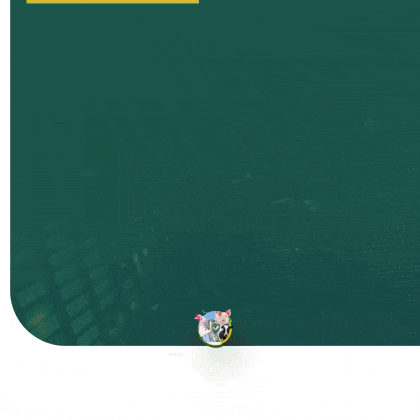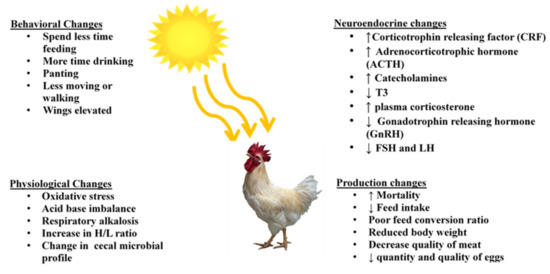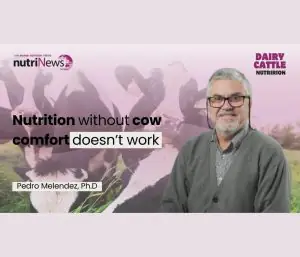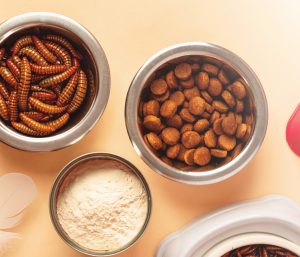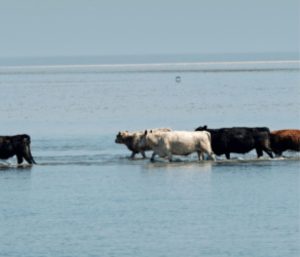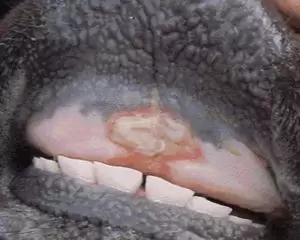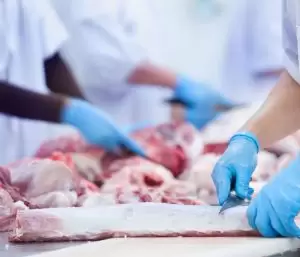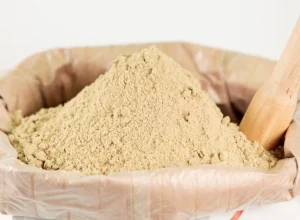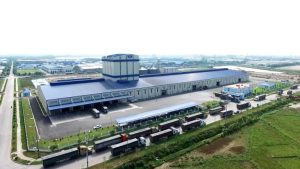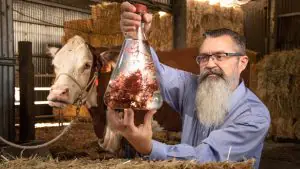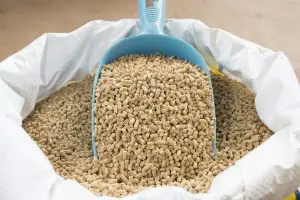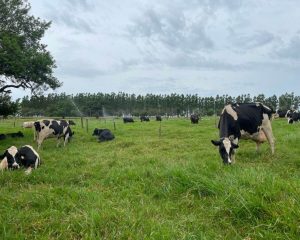Home » Animal Health » Heat stress: Poultry health, performance and potential mitigation strategies
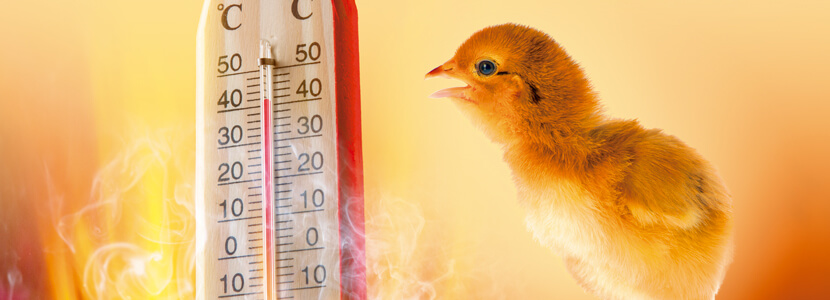 07 Dec 2022
07 Dec 2022
Heat stress: Poultry health, performance and potential mitigation strategies
Heat stress represents a major challenge for maintaining health and performance levels within the poultry industry.
Introduction
Global consumption of poultry products such as meat and eggs has doubled in the past decade and is expected to be doubled by 2050. Poultry meat contains low amounts of saturated fatty acids and is rich in protein, vitamins, and minerals. Poultry eggs are one of the most affordable sources of animal protein, and besides their content of vitamins, minerals, and proteins, they are also rich in antioxidants such as lutein and zeaxanthin. Offering significant eye health benefits. Therefore, global demands on poultry products have significantly increased, and will most likely continue to do so.
In response to such demands, there have been great improvements in chicken genetics during the past decade. Broiler chickens, which weighed around 900 g in 56 days in the 1950s, were around 4202 g in 2005. Similarly, laying hens in the early 1900s used to lay 150 eggs per year while current commercial laying hens lay around 300 eggs annually . Such genetical improvements in broilers and laying hens, have also brought upon higher metabolic rates and production performances in these animals. The higher metabolic rates of these animals generate larger amounts of body heat, making them much more susceptible to heat stress. The risk of heat stress in poultry is made even worse due to current rearing conditions with high stocking density of birds, along with high environmental temperatures.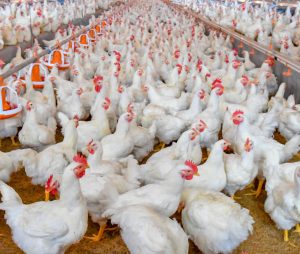
Heat stress is one of the major environmental stressors in the poultry industry resulting in substantial economic loss. It causes several physiological changes, such as oxidative stress, acid-base imbalance, and suppressed immunocompetence. Leading to increased mortality and reduced feed efficiency, body weight, feed intake, and egg production. While also affecting meat and egg quality.
As of 2003, the poultry industry suffered annual economic losses of $128 to $165 million, due to the negative impacts of heat stress. When subjected to this extreme condition, birds are unable to maintain a physiological balance between body heat production and heat loss. This condition involves the interaction of several factors such as:
- high environmental temperature
- humidity
- radiant heat
- and airspeed
The normal body temperature of chickens ranges around 41–42 °C. Meanwhile, the thermoneutral temperature to maximize growth ranges between 18–21 °C . Studies have shown that any environmental temperature higher than 25 °C can cause heat stress in poultry. There is extensive scientific literature covering the negative impacts of heat stress on poultry health and performance. There is also a significant amount of studies carried out in search of potential mitigation strategies.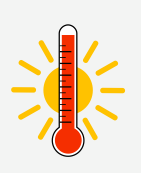
This article aims to review some of the most relevant published information regarding the physiological and behavioral changes seen in poultry when subjected to heat stress, as well as mentioning (2) potential mitigation strategies for broilers and laying hens.
Biological changes in poultry associated with heat stress
Heat stress in poultry results in several behavioral, physiological, and neuroendocrine changes that influence both health and performance.
Figure 1. Effects of heat stress on behavioral, physiological, neuroendocrine, and production traits.
Source:(Wasti, S.; Sah, N.; Mishra, B. 2020)
Oxidative Stress
Reactive oxygen species (ROS) are free radicals and peroxides produced typically within the cells during regular metabolism. They are essential for many cellular processes such as cytokine transcription, immunomodulation, and ion transportation. The excess ROS produced within cells are eliminated by physiological detoxifying mechanisms present within the cells.
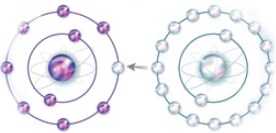 However, higher ROS production or a diminished antioxidant defense system, exposes cells to conditions known as oxidative stress. Effects of oxidative stress depend upon its severity and range from small reversible changes to apoptosis and cell death in severe cases. Oxidative stress in poultry is associated with severe health disorders, lower growth rates, and significant economic losses.
You may also like to read: “Natural antioxidants: Applications in animal nutrition”
However, higher ROS production or a diminished antioxidant defense system, exposes cells to conditions known as oxidative stress. Effects of oxidative stress depend upon its severity and range from small reversible changes to apoptosis and cell death in severe cases. Oxidative stress in poultry is associated with severe health disorders, lower growth rates, and significant economic losses.
You may also like to read: “Natural antioxidants: Applications in animal nutrition”
Acid-base imbalance
Birds lack sweat glands and have feathers throughout the body which impair thermoregulation. Thus, they must release heat via active mechanisms such as panting when subjected to high environmental temperatures. Birds open their beaks in an attempt to increase their respiratory rate as well as evaporative cooling from the respiratory tract. During panting, CO2 excretion occurs at a greater rate than the cellular production of CO2, which alters the standard bicarbonate buffer system in the blood.
To cope with this situation and maintain the normal blood pH, birds will start excreting more amount of HCO3− and retain H+ from the kidney. The elevated H+ alters the acid-base balance leading to respiratory alkalosis and metabolic acidosis. This acid-base imbalance is associated with a decline in performance and the anima’s health status.
Suppressed Immune function
Heat stress is known to suppress birds’ immune function, which in turn results in a higher prevalence of different infectious diseases, such as: Newcastle disease and Gumboro disease.
 It has also been observed that birds subjected to heat stress suffered a reduction in the size of immune-related organs, such as:
It has also been observed that birds subjected to heat stress suffered a reduction in the size of immune-related organs, such as:
- spleen,
- thymus,
- and lymphoid organs
Antibody titers have also been shown to be lower in heat-stressed birds as well as total white blood cell counts (WBC). Meanwhile, the heterophils to lymphocytes (H/L) ratio has proven to be higher for birds under heat stress conditions.
Potential nutritional strategies for mitigating heat stress in poultry
The following are just some examples of nutritional strategies, from the many existing ones that have been developed and tested to counter heat stress in poultry production.
Feed Restriction
Restricting the feed during the hotter period of the day has been a common practice in poultry production. In this practice, feed intake is reduced by withdrawing feed for a certain period to reduce the metabolic rate of birds. Feed restriction has been shown to reduce rectal temperature, minimize mortality and reduce abdominal fat in heat-stressed broilers.
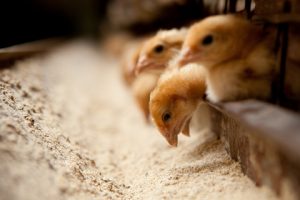
Dual feeding regime
Practical observations have shown that feed restriction results in overcrowding and rush at a re-feeding time resulting in some additional mortality. Thus, the dual feeding regime has been devised to ensure birds have access to feed throughout the day. The thermic effects of proteins are higher than carbohydrates and produce higher metabolic heat. Taking this into account, the protein-rich diet is provided during cooler times and the energy-rich diet during the warmer period of the day.
Wet feeding
Birds lose a significant amount of water through the respiratory tract when subjected to heat stress. Therefore, they increase their water intake under this conditions, in order to restore their thermoregulatory balance. Adding water in the feed helps increase water intake and reduces viscosity within the gut resulting in a faster feed passage. Wet feeding stimulates pre-digestion, improves nutrient absorption in the gut, and accelerates the action of digestive enzymes on the feed.
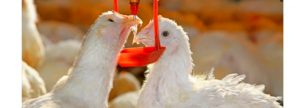 Conclusions
Conclusions
- Heat stress has become a major challenge affecting the development of the poultry industry during the last decade. This scenario has become even more complicated due to rising global temperatures.
- Heat stress in poultry results from the interplay of several factors, such as: high environmental temperatures, humidity, radiant heat, and airspeed. Causing significant physiological, neuroendocrine, and behavioral changes in the animals.
- Several strategies have been set forth and tested to mitigate the deleterious effects of heat stress in poultry. However, only a few of these are widely implemented within the poultry industry.
- Due to its multifactorial nature, single strategy approaches are not effective at counteracting the negative impacts of heat-stress on poultry. Therefore, a holistic approach towards heat stress mitigation in poultry is required.
- The use of nutritional strategies, modifications in housing and management should all prove to be beneficial in mitigating heat stress. However, greater research evaluating the combination different approaches to counteract heat-stress in poultry is still needed. In order to evaluate the efficiency of such combinations and assess their cost to benefit relation.
Source: This abstract was taken and modified from: Wasti S, Sah N, Mishra B. Impact of Heat Stress on Poultry Health and Performances, and Potential Mitigation Strategies. Animals. 2020; 10(8):1266.
Read full article: https://doi.org/10.3390/ani10081266








